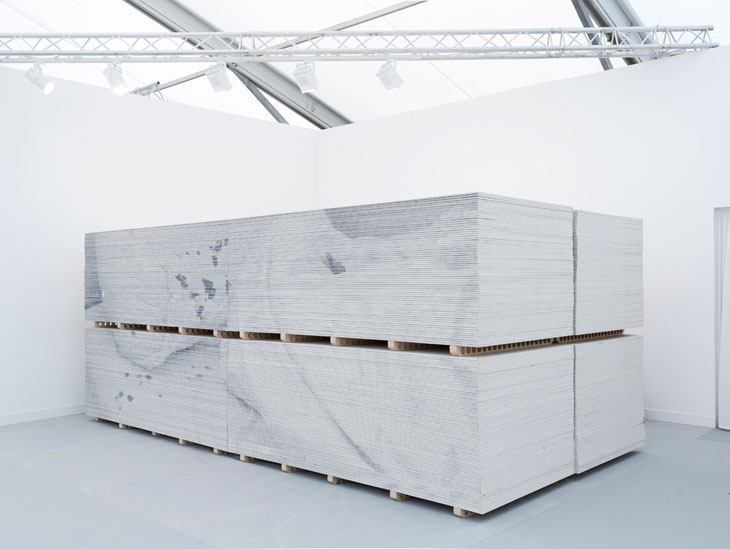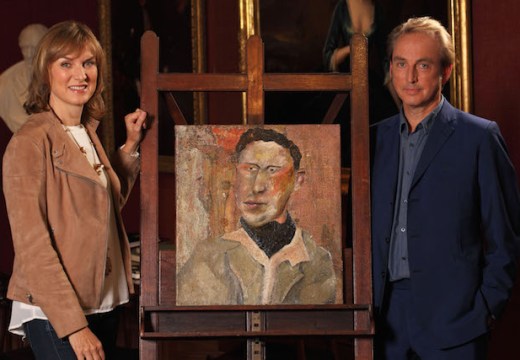In recent years, many artists have become disgruntled about the perceived excesses of the contemporary art market. Have their efforts to control inflated prices had any effect, or merely flagged up how powerless they are to influence the market?
Ever since a primary art market developed in 19th-century Europe, artists have interacted with it in different ways. Some have embraced the market and succeeded in navigating it, some have ignored it (or been ignored by it), and others have actively fought against it. While deliberate efforts on the part of artists to subvert or challenge the market developed in the post-war period, they seem to have intensified in the first decades of the 21st century due to the rapid growth of the contemporary market.
Gustav Metzger, who died earlier this year at the age of 90, argued against the commercialisation of the art world as early as 1959, when the market for contemporary art in the UK was still in its infancy. In his first artist manifesto he described the function of his art as ‘a desperate last-minute subversive political weapon and attack on the capitalist system (an attack also on art dealers and collectors who manipulate modern art for profit)’. Not only did he produce paintings that he sprayed with acid so they destroyed themselves (a technique that was a form of what he called ‘auto-destructive art’), but he also called for an art strike and refused to make art at all between 1977 and 1980. Metzger is only one example of those artists who have worked outside the art market: he was never represented by a commercial gallery and his works have never appeared at auction.
Artists since have refined their messages. In some cases, the work itself encapsulates ideas about the mechanics of the (art) market as well as questions about how value is ascribed. The Sunday Painter, a gallery based in London, presented Marsh Lane Diversion (2016) by Rob Chavasse at Frieze London, which consisted of stacked plasterboards with an image printed on the front of them. The boards had been temporarily removed from circulation of the building industry but had to be returned to it after the fair – a buyer could, for £20,000, purchase the right to recreate the work but would never own the boards themselves. The work’s physical material is always borrowed, fed back into a different economic circulation system after being deinstalled. According to the gallery’s Tom Cole, it is still available.
Today, there are a number of artists who participate actively in the art market but take – at least at times – a stand against its perceived excesses. Such statements of dissent can be broadly divided into two categories. Some artists have denounced their authorship of artworks outright; others have tried to adjust the value of a piece by manipulating the availability of their work through (official or unofficial) editions or copies. While the first strategy seems much more radical, the second has perhaps a subtler but more combative impact on the market.
The idea of denouncing authorship of a work of art gained media attention when Richard Prince announced in January this year that he was not the artist who had produced an Instagram painting of Ivanka Trump, although he had been commissioned to do so in 2014. He tweeted: ‘This is not my work. I did not make it. I deny. I denounce. This fake art,’ and returned the $36,000 he had been paid by Trump for the painting. In this case, the artist was not making a direct comment on the market, but a political statement, seemingly laying claim to the power of artistic creation at a time where the agency of artists in society seems weakened; the question of whether a work of art still exists when the artist ceases to recognise it as their own is a thorny philosophical and legal matter.
The American artist Cady Noland takes the disavowal of authorship to extremes, having disowned a number of works she originally created. In 2011, her Oozewald (1989) sold for $6.6 million at Sotheby’s New York, at the time setting the record for the highest price ever paid for a female artist at auction; due to be sold in the day sale of the same auction series, Cowboys Milking (1990) was disowned by the artist shortly before the auction. Noland claimed that damage to the corners of the work, which had been estimated at $250,000–$350,000, invalidated it completely. She referred to the Visual Artists Rights Act (VARA) of 1990, which states that the author of a work of art ‘shall have the right to prevent the use of his or her name as the author of the work of visual art in the event of a distortion, mutilation, or other modification of the work which would be prejudicial to his or her honor or reputation’.
Sotheby’s subsequently withdrew the work from the sale, which resulted in a failed law suit brought against the auction house and artist by the consigner of the work, the dealer Marc Jancou. Whether one understands this as obsessive behaviour or a serious act of defiance, it is important to be reminded that the value of an artwork reaches beyond its market price, and that many artists care deeply about what happens to their work after they create it – especially at a time where auction records for artists are broken at every major auction. The different outcomes for Oozewald and Cowboys Milking point to an ambiguous situation for artists: Noland wasn’t able to control or benefit from the high price achieved by the former (there is no artist’s resale right in the US), while she was able to influence the secondary sale of another work by declaring that she was dissatisfied with its condition, in effect protecting the status of her works in the secondary market.
Perhaps it isn’t surprising that artists – and particularly those working in the US – have developed strategies to influence the economic performance of their works after their initial entry into the market. Wade Guyton, who has had a long institutional as well as commercial career with his digitally produced paintings and drawings, used a different method to express his unease with the estimates at which his work was being offered for at auction.
In 2014, Christie’s included Untitled (2005) in its May auction for an estimate of $2.5–3.5 million, a work that had been purchased by its then owner at Frieze London in 2005, from the Swiss gallerist Francesca Pia. According to Pia, Guyton was ‘angry’ that the work had come up for sale at such a price, so he produced multiple prints of this work in his studio from its original image file and in essence denounced the uniqueness of the work offered. However, his attempt to devalue his own work failed spectacularly: the work still sold for $3.5 million. Since then, Guyton has developed a more serious attempt at institutional critique by offering all his dealers the same ‘unique’ work for an art fair (so that there are several versions of it on the market at once) and by increasing his primary market prices to avoid the incentive of secondary market speculation. Despite the fact that the uniqueness of an object in the art market is still valued, it seems that many buyers care less about that than about current market trajectories, and how ‘hot’ an artist is at any point.
Notably, in his current exhibition at Tate Modern (and in the accompanying catalogue), the German photographer Wolfgang Tillmans has not declared edition numbers for most of the works on display. According to his gallery, Galerie Buchholz, the artist never exhibits works loaned by collectors, but creates exhibitions using specially produced copies – works that don’t have a market value as they never come into circulation. All the same, two of his abstract Freischwimmer works fetched auction records for the artist at the London sales earlier this year; both editions of one plus one artist’s proof.
Tillmans seems to have found an elegant way to deal with the necessities of the market while being able to use the images he creates as he wishes. But it still remains almost impossible for artists really to influence the trajectory of the market. Once their work enters the circuit of the high-value secondary market, there is little they can do. The idea of dissociating art from the market – conceptually in the case of Chavasse, or practically with Metzger – can only succeed in the primary market – or maybe only within an institutional framework.
Stephanie Dieckvoss is the London art market correspondent for Handelsblatt and the Neue Zürcher Zeitung.
From the May 2017 issue of Apollo. Preview and subscribe here.
Unlimited access from just $16 every 3 months
Subscribe to get unlimited and exclusive access to the top art stories, interviews and exhibition reviews.














![Masterpiece [Re]discovery 2022. Photo: Ben Fisher Photography, courtesy of Masterpiece London](http://www.apollo-magazine.com/wp-content/uploads/2022/07/MPL2022_4263.jpg)
It’s time for the government of London to return to its rightful home